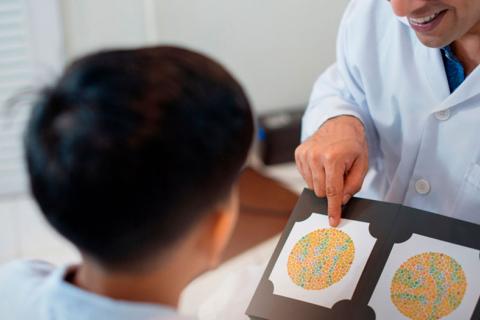
People with color blindness are unable to distinguish certain colors, a problem of genetic origin that could be partially solved thanks to a new gene therapy. According to research published in the journal Brain, this new therapy would have managed to partially restore the retina in two color blind children.
Specifically, the study consisted of two trials and to carry them out they had the participation of four young people between 10 and 15 years old who had been born with achromatopsia or color blindness. In the tests, gene therapies directed at specific genes related to this visual problem were tested and their effects were verified thanks to functional magnetic resonance imaging that was capable of differentiating between emerging cone signals after treatment and those driven by existing rods in patients.
In addition, researchers at University College London used a technique called silent substitution, in which pairs of lights are used to selectively stimulate rods and cones. All of these results were compared with those of a group of nine untreated colorblind patients and 28 volunteers who had normal vision.
Gene therapy at an early age could improve outcomes
“Our study is the first to directly confirm widespread speculation that gene therapy offered to children and adolescents can successfully activate dormant cone photoreceptor pathways and evoke visual cues. We are showing the potential of harnessing the plasticity of our brains, which may be particularly capable of adapting to the effects of treatment when people are young”, explained Dr. Tessa Dekker, principal investigator of the research.
“Gene therapy offered to children and adolescents can successfully activate dormant cone photoreceptor pathways and evoke visual cues”
Each of the four children was treated with gene therapy in one eye, allowing the researchers to compare the effectiveness of the treatment with the untreated eye. The results showed that of the four children in the study, two of them had strong evidence of cone-mediated signals in the visual cortex of the brain produced by the treated eye between 6 and 14 months after being treated with the gene therapy.
Before receiving the treatment, the patients did not find cone function in any test, however, after treatment their measurements were very similar to those of the study participants with normal vision. The two children also showed a difference in cone-assisted vision in their eyes on psychophysical tests that assess the ability of the eye to differentiate between different contrasts.
Dr. Michel Michaelides, co-author of the study, reported that “in our trials, we are testing whether giving gene therapy earlier in life may be more effective. while the neural circuits are still developing. Our findings demonstrate unprecedented neural plasticity, offering hope that treatments can enable visual functions using signaling pathways that have been dormant for years.”
.















